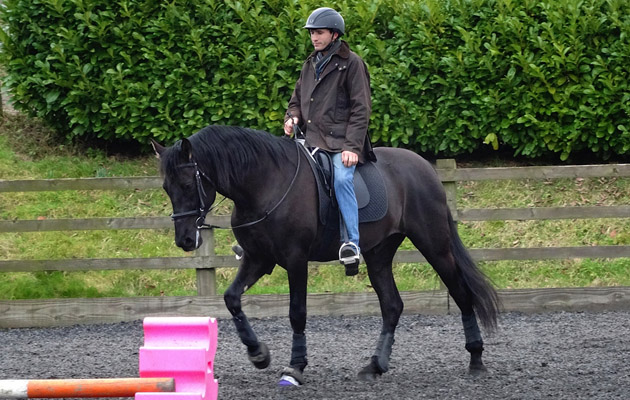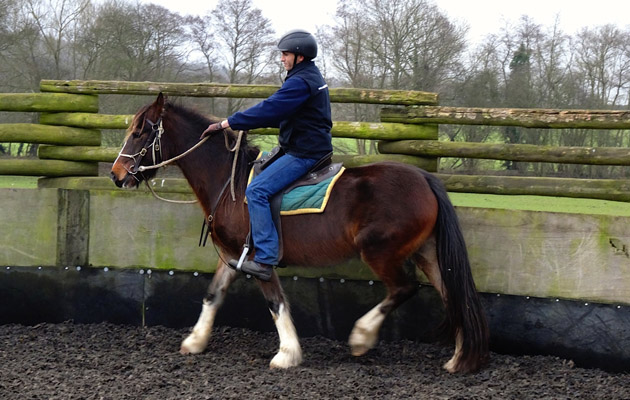Last week we had a very entertaining evening courtesy of our vet (and eventer), Tony Warr, who arranges an annual talk and meal at the very plush Hotel du Vin.
We had the pleasure of hearing a talk on respiratory diseases in horses from Philip Ivens MA VetMB Cert EM (Int. Med.) DipECEIM MRCVS from Buckingham Equine Vets. As he discussed the latest findings and the increasingly effective and easy to use drug treatments, the thing that really stood out was the way we manage and keep our horses.
When you consider the legal limit for inhalable dust in human environments is 2.5 mg/m3 and most stable blocks have up to 17.5 mg/m3, you can appreciate every effort should be taken to reduce dust in yards in order to for stabled horses to perform at their peak.
Using quality dust-free bedding, increasing airflow in the stable area, removing the horse while you muck out, reducing footfall through the stable area, keeping hay away from the stable area and steaming or soaking hay all go some way to improving the air quality for the stabled horse.
There was an interesting anecdote of a top racehorse in the US whose performance dipped when he was moved to the stable near the office. With a footfall of around 50 people a day going into and out of the office, the additional dust this created was enough to affect the horse’s performance on the track.
He returned to his winning ways when he was moved to a more settled corner of the yard.
Spring is on its way
Over the past couple of weeks, the yard has become very full as people seem to realise spring is around the corner and they are looking forward to either riding their youngsters or getting out and about competing.
As always I have some interesting cases. One has had a bad experience mounting so I went right back to basics and starting off riding him bareback to regain his confidence.
I also have a mare in that displays a shiver type response. This horse has been checked by a vet but before he goes any further with tests, he recommended she came to me first to address her behaviour, which has made it hard to get to the bottom of a diagnosis. It is a difficult cycle to break as I believe there is an underlying physical problem that is linked to the attitude.
I am also making good progress with Cagney (pictured below), a rescue horse who is believed to be the sister to Clayden, who I have written about in previous blogs. I have started riding her and she took her first outing around the farm in her stride.
Continued below…
Read more of Jason’s blogs

Jason Webb’s blog: Moving forward off the leg
H&H's blogger explains the importance of ensuring your horse always moves forward off your leg and updates us on World

Jason Webb’s blog: ‘Confidence is essential for success’
H&H's blogger explains the importance of confidence in training horses and his New Year's resolutions for 2015

Jason Webb’s blog: horse life is very different down under
Jason is enjoying a few weeks visiting his folks back in Australia, where horses have a very different way of
Frustration had set in
I am also doing some work with a dressage horse and rider who came to me through reading the Horse & Hound blog! The pair has been together for the last 18 months, but frustration with each other has set in.
The horse is a good looking gelding with decent paces, but is not a naturally forward thinking horse. After reading my blog about how continual kicking and niggling creates horses that become immune to it and fed up, she recognised that this is what has happened in her partnership with her horse.
We have adopted my policy of not using any leg unless changing gaits, which has had an immediate effect. Her horse is still prone to being lazy, but the responses to the leg are much better. It seems we have stopped a downward cycle and are now getting improvements every day.
However, during a recent lesson the rider turned to me and said: “He [her horse] makes me feel like a novice!” This turned my attention from the horse to the rider — these type of horses train riders to kick more, which not only affects the horse but also compromises a rider’s balance.
The kicking had meant she was gripping at the knee and that left the lower leg flapping in the breeze. With this much “noise” in the lower leg area, the horse would struggle to determine any clear aids.
To remedy this I have got her practicing simple exercises to engage her core and open up a block in her hips. They are improving her balance and developing a more independent seat, which in turn has quietened her lower leg and created more awareness of her body as a rider.
Remember, horses can train you as well as you can train them!
Jason





